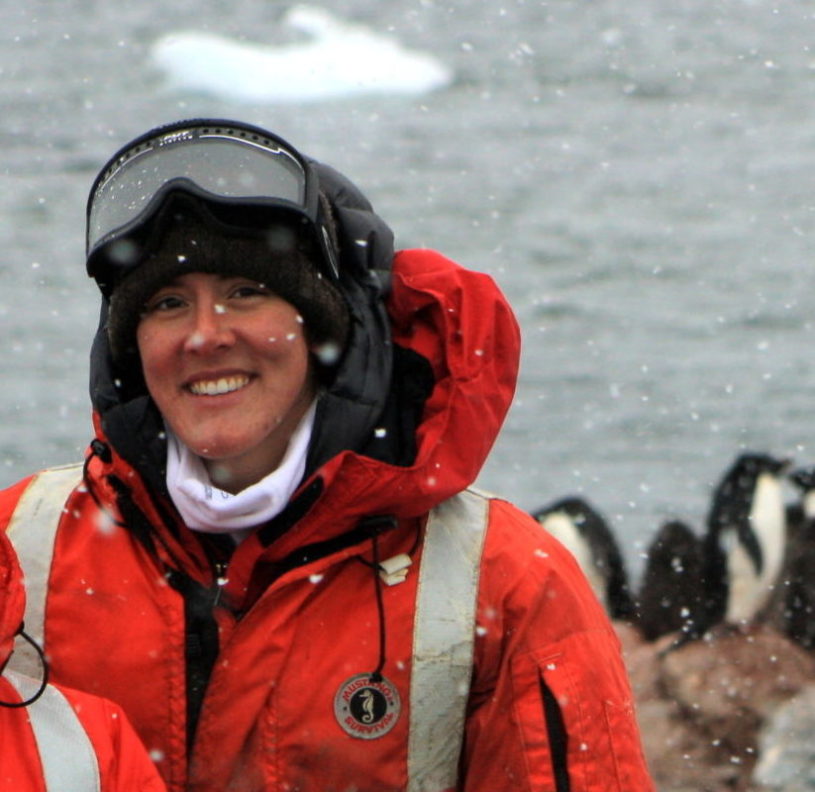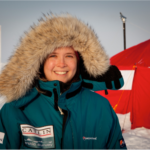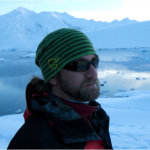Nicole Couto
Polar Scientist in the Spotlight
Learn about all sorts of careers that polar scientists have as we explore their different research areas through the featured Polar Scientist of the Month.
Nicole Couto
Postdoctoral Scholar, Scripps Institute of OceanographyWhat do you do?
I study the movement of ocean heat and how it is transported from offshore regions to coastal areas where it can melt glaciers and influence productive marine ecosystems.

What is the best thing about your job?
I really love doing fieldwork. There is something thrilling about loading up a boat with scientific equipment, driving out to a sampling site, and bobbing around on the water collecting samples and deploying instruments. When the weather is nice, it’s the best way to spend a day; when the weather is bad, it makes me feel adventurous! When I’m not in the field, I love using Matlab to find patterns in the data we collect… really, I do! Programming for data analysis is like solving lots of little logic puzzles all day long. I can get lost in my computer screen and become very stubborn, working at a problem until I get it right.
What is the most important tool you use for research?
Gliders! Gliders are ocean robots that move up and down in the ocean sampling continuously for weeks or even months. They are an incredibly important tool for gathering information about how ocean conditions change over space and time. And they go where we can’t. Even in remote regions and harsh conditions, they work tirelessly to collect valuable scientific data.
Why is what you do important?
Our understanding of the world’s oceans, and the Southern Ocean in particular, is limited by the amount of data we have collected. It’s so important that we keep going into the field to take measurements of the physical environment season after season and year after year. We can start to see patterns in how water masses move, how they respond to things like winds and tides and the changing global climate, and how they influence biological activity. We need to understand how physical processes are linked to each other, and how they’re linked to biological processes so that we can predict how they will change if the environment changes.




